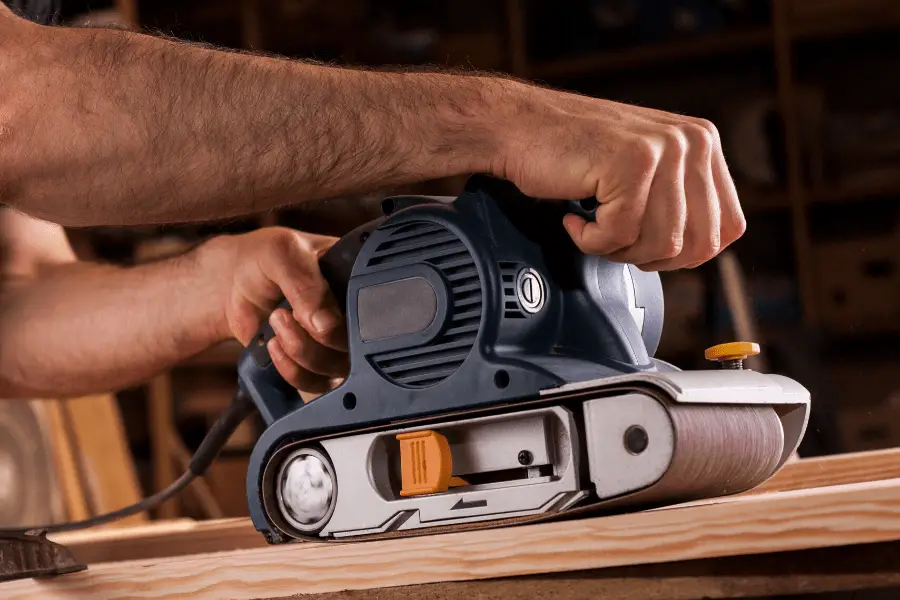
There are so many helpful options when it comes to sanding down your project. Each tool has a specific purpose and function that separates it from the others. I’ve researched through the internet and put together a quick summary on the Belt Sander.
What Is A Belt Sander Used For? A belt sander is a hand-held power tool designed to quickly shape, smooth, or remove large amounts of material. It is best used on large projects like sanding a deck, removing paint, sanding hardwood floors or on furniture and other large woodworking projects.
Keep reading below to get a more in-depth look at belt sanders and what they are used for.
What Is A Belt Sander Used For?
A belt sander is a powerful hand-held power tool designed to quickly shape, smooth, or remove large amounts of material, and can be used on large projects like sanding a deck, removing paint, sanding hardwood floors or on furniture and other large woodworking projects.
A belt sander has a 3” or 4” wide loop of sandpaper that spins around two rollers with a large flat working surface. Many belt sanders are portable handheld units, but some are built as a stationary bench-mounted unit, which allows you to bring the material to the sander for sanding or shaping of smaller materials, and makes other uses possible, such as sharpening tools.
Some belt sanders can be clamped to a solid work surface to be used like a bench-mounted unit, while for some belt sanders, you can purchase an adapter to convert it to a bench sander.
A belt sander works great when used for sanding large areas, as it has a powerful motor that can remove material quickly when using rough grit sandpaper (such as a 50 or 80), or you can use fine grit sandpaper (such as 120 or 150) for quickly smoothing and finishing a large area.
Belt sanders are often used for wood, but can be used in some cases for metal and other sandable materials, such as sanding off burrs, or removing paint or rust. Just make sure you use a sanding belt designed for metal and that you empty and remove the dust collector so you don’t accidentally start a fire.
One of the major features of using belt sanders is when you need to remove excess material, such as on a countertop or a door. Once a line is scribed, the belt sander can be used to remove material to that mark.
Belt sanders are very powerful, and if not used carefully, can take off more material than intended. Take this into consideration when picking the grit level of the sandpaper you will be using for the intended purpose.
Belt sanders are more suited for final finishing on wood grain than orbital sanders, as you can sand with the grain, whereas an orbital sander will leave scratches on the wood surface as the orbiting action won’t sand with the grain. However, if you use a belt sander against the grain, you can quickly leave deep scratches in the wood.
Belt sanders can also be used to quickly sand down an uneven surface or joint, such as where two surfaces meet on a piece of furniture or on transition areas on wood flooring.
Due to the power of belt sanders, they can be a little more challenging to control, and so they are not the best for work that requires finesse unless they are mounted.
Most belt sanders come with a built-in dust collector, which makes it easier to keep your workspace clean, and some come with a variable speed motor, which helps when you’re doing finish sanding, delicate projects, or only removing small amounts of material.
Whatever you’re working on, a belt sander is a very useful tool to add to your collection, and you will be sure to find yourself reaching for it often.
Click this link to browse through Belt Sander options on Amazon.
Belt Sander Tips
Subscribe to WoodWorkers Guild Of America on Youtube
Woodworking Joke:
The politically correct way to fire a woodworker is to tell him he’s finished.
Lumberjacks, on the other hand, usually just get the axe.
